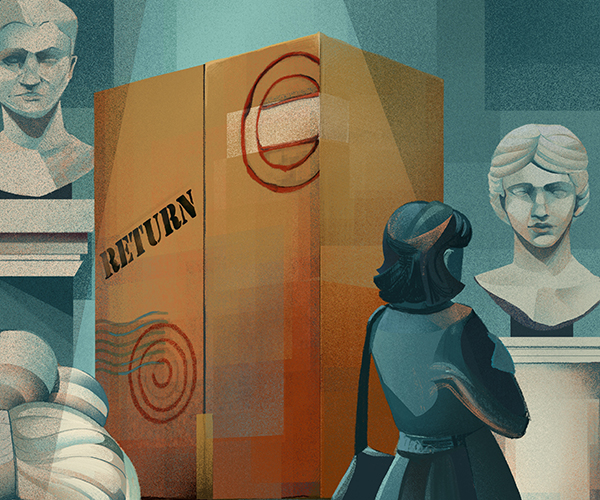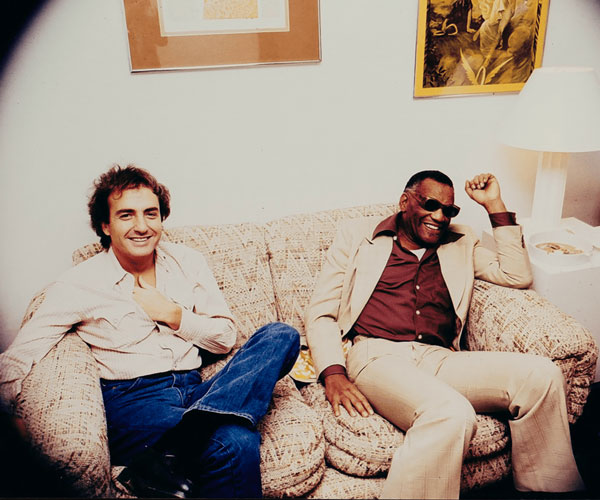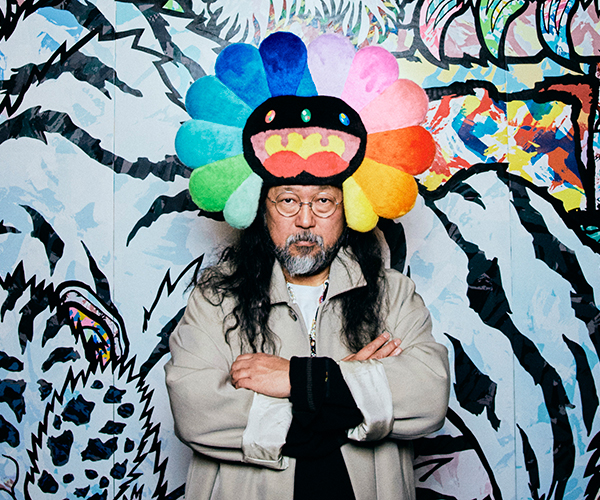sky light
From the north entrance, you get a glimpse of it — a sense of the immense space ahead. The atrium, officially opened in October 2012, stretches as wide as a football field. Its glass ceiling rises as high as the original 1916 Building. Dexter Davis, a painter whose piece Black Heads is part of the museum's collection, also works at CMA as a security guard. He's spent many hours standing guard in the atrium and looking out at it from nearby galleries.
When I saw the plans for the atrium, they were almost surreal to me, because I couldn't see how it could really be. I was totally blown away the first time it actually opened. I couldn't believe how the space was developed. The scale of it was overwhelming.
When the sun comes out and you see the sky, it creates patterns all over the place. The space is not empty; it becomes full with all the light and shadows that come through it. So it becomes almost an art piece within itself. The light that comes through there is very exciting, because it's always different.
The first time I experienced visitors coming through, they could not stop looking at it. People just couldn't believe it. Cleveland, despite the hits we get sometimes, the museum really put their all into investing in this space.
They've been having a lot of these Mix parties. The costume event this past Halloween, an overwhelming group of people came. They had a projection on the 1916 Building. They were playing movies on this projector, and they were playing music to the movie. People were dancing, people were socializing, like a huge nightclub.
I'm a people-watcher because I'm a security guard, so it's very interesting seeing people in the space at a distance. And you see how people enjoy themselves. It gives you energy. It's an incredible thing. You feel like this is bigger than the situation itself, like it's bigger than life. — as told to Erick Trickey
guiding star
The opening of the new North Wing galleries in June marked the first time in eight years visitors could view more than 420 pieces in the museum's Pre-Columbian, Native North American, Japanese, Korean and textile collections. Sue Bergh, curator of Pre-Columbian and Native North American art, talks about the gallery's opening night and what it feels like to have people re-engaged with the new space.
The gallery opened to the public for the first time the night of the Solstice party. I was so excited. The reopening was like a big homecoming party.
I stood in the gallery for two hours, watching people interact with the art. I tried to listen in on conversations to hear what people were saying. They thought it was beautiful, how in the [new gallery], the objects really shined. ... I see myself as sort of a witness to everything.
People are very impressed with the freestanding Mayan stela. [It] measures 108 inches high by 72 inches wide and shows a Mayan queen. Her body is facing front, and her face is turned to one side. It's only several inches thick. In the previous installation, it was embedded in a wall. One goal of the reinstallation was to give the stela its original appearance as a freestanding monument.
She's by far the largest piece in the gallery. She has this huge, imposing overwhelming presence. It's nice to have people stop and look at her. When the gallery is lit up [and the sun has set], you can see her profile from the atrium, and it looks like she's beckoning people into the gallery.
When I walk through the space, I feel a sense of peace and tranquility. I'm among beautiful, interesting objects that I love, and they look splendid in the new galleries. It's wonderful to see people re-engaging with the collections again. That's what we're here for. — as told to Rebecca Meiser
wing span
Krishna Govardhana, a Cambodian sculpture from the sixth century depicting a god lifting a mountain to provide shelter for his followers, was a destination piece for visitors. But with the museum renovations, Krishna and many other popular Asian art pieces were stored away. On Jan. 2, the public will finally get to see Krishna again, along with more Southeast Asian artworks and the Chinese, Himalayan and Indian art collections, for the first time in more than eight years when the new West Wing galleries open. Anita Chung, curator of Chinese art, talks to us as staff put the finishing touches on the transformed space.
It's been a long, gradual process of putting everything together. We've been working on it since the summer. Some of the [Chinese] paintings are very light sensitive, so we're putting them up in the gallery last. We wanted to be really careful with them.
We have about 10 works of art we're going to display for this rotation. Every time we unroll one of the paintings, I get a sense of satisfaction. They are all masterpieces from Chinese history.
In the past, we had a lot of the Asian materials mixed together. Now, we can finally give all the collections their proper space.
I am excited to articulate the story of Chinese art from 5,000 years ago until today. Some of the early artworks were used for burials and rituals, while some of the later works were commissioned [by scholars] for emperors, for use in their luxury lifestyles. I want people to walk away with an understanding of the diversity of Chinese art.
The [private] reopening of the gallery is on New Year's Eve. I haven't thought yet about what I'm wearing or what I'll say. My mind right now is on finishing the gallery. The only problem is what we will do at midnight. We can't drink in the gallery. Maybe we'll all move to the atrium when the clock strikes midnight. — as told to Rebecca Meiser



